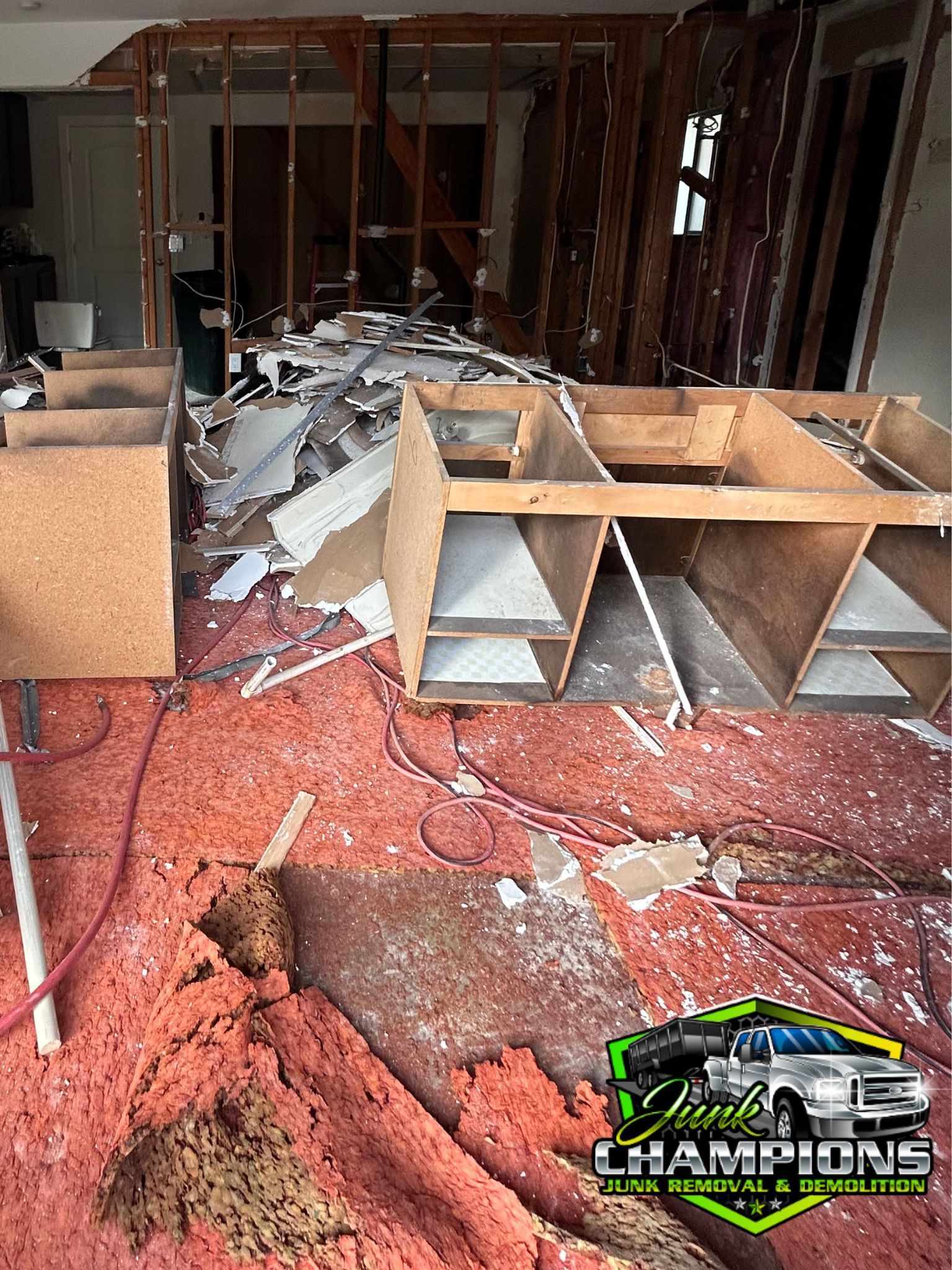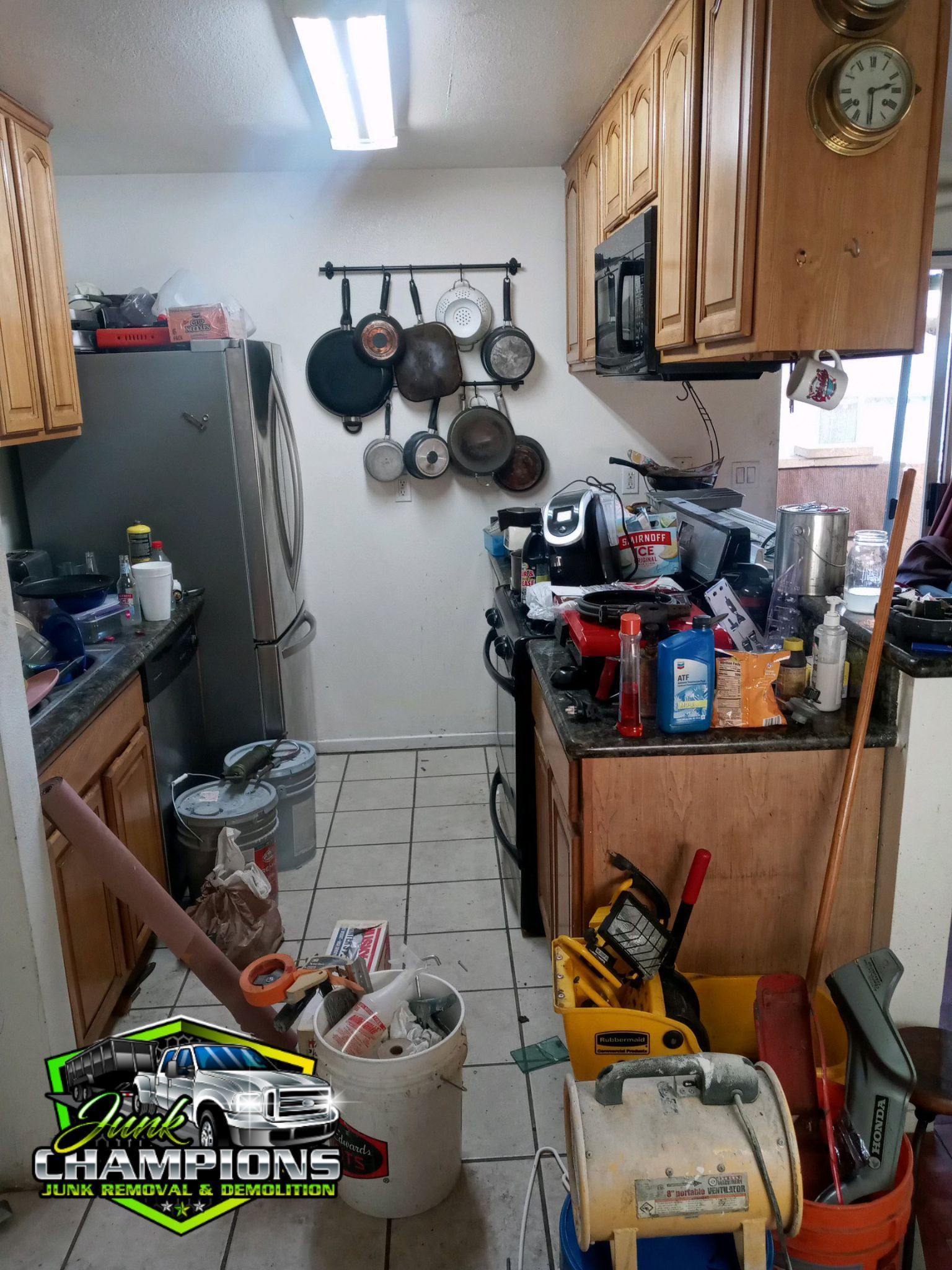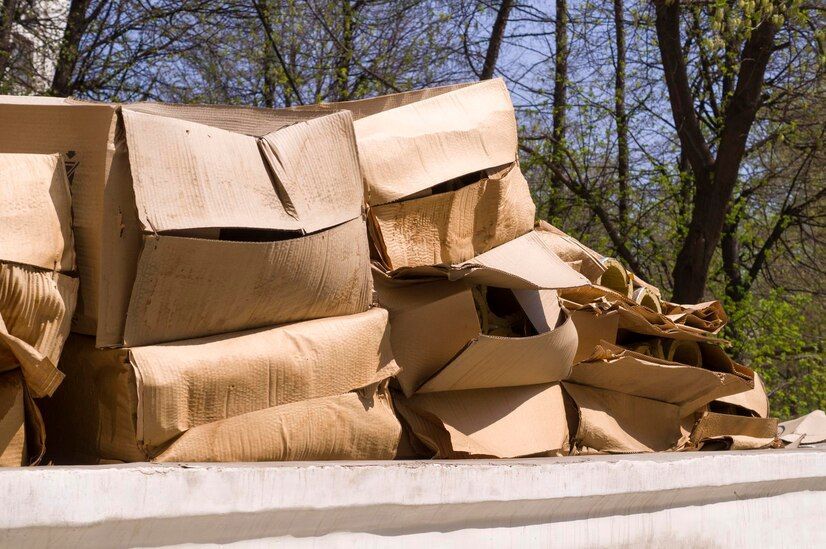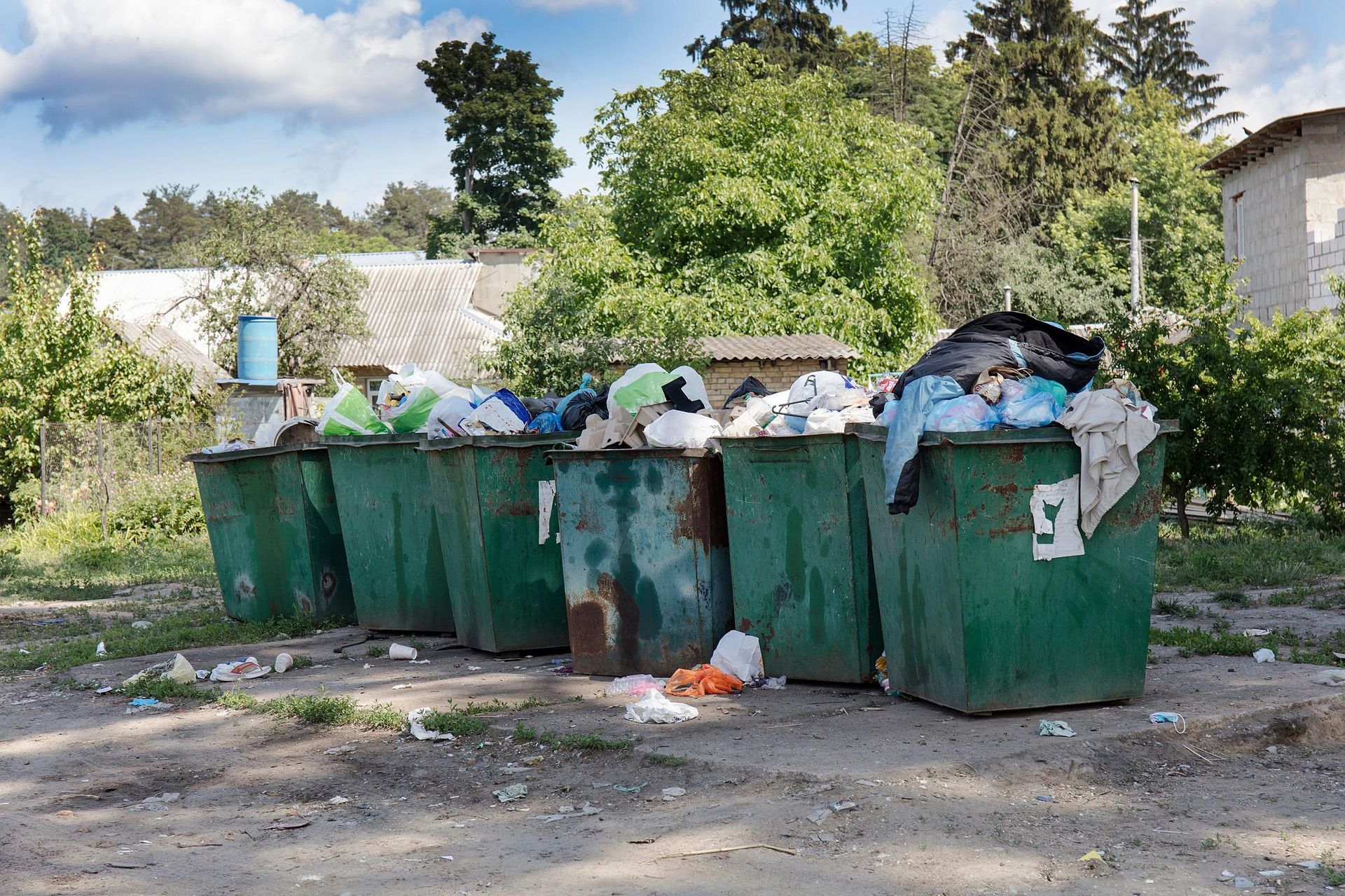How to Handle Fridge Removal in Rancho Cucamonga
Why Proper Fridge Removal Is Important
Fridges are large, heavy appliances that serve a crucial role in our daily lives. However, when they reach the end of their lifespan, they need to be removed. Taking the right approach for fridge removal ensures a smooth process and offers several benefits:
- Maximized Space: An old fridge takes up valuable space that could be used for other purposes. Whether it's cluttering your kitchen or garage, removing the appliance frees up room for better organization, storage, or even a new, more efficient appliance.
- Environmental Responsibility: Refrigerators contain harmful chemicals, such as refrigerants, that can damage the environment if not properly disposed of. Ensuring that your fridge is recycled or disposed of correctly minimizes your carbon footprint and prevents hazardous substances from harming natural ecosystems.
- Safety Concerns: Old or malfunctioning fridges can pose significant safety risks, including electrical issues, gas leaks, mold buildup, and attracting pests. By removing the fridge promptly, you eliminate these potential hazards and ensure the health and safety of your home and family.
Step 1: Explore Your Options: Donation, Recycling, or Disposal
Before jumping into removal, consider whether your fridge can be reused or recycled. Depending on its condition, donating or recycling it could be a better alternative to disposal.
Donation
If your fridge is still in good working order, donating it can benefit others in need. Many local charities and organizations gladly accept gently used appliances to help families, seniors, or low-income households. Some charities even provide free pickup, making the donation process hassle-free and convenient.
Recycling
Recycling your old fridge is an environmentally friendly option that helps reduce waste. Refrigerators contain valuable materials such as metals, plastics, and glass, all of which can be recycled and repurposed. Recycling centers that specialize in appliance recycling will ensure that harmful substances like refrigerants are safely handled and disposed of.
Disposal
When a fridge is beyond repair and cannot be donated or recycled, proper disposal is crucial to prevent environmental harm. Local waste management services or junk removal companies can assist with removing and disposing of your fridge responsibly. These services ensure that your appliance is disposed of in compliance with local regulations and safety standards.
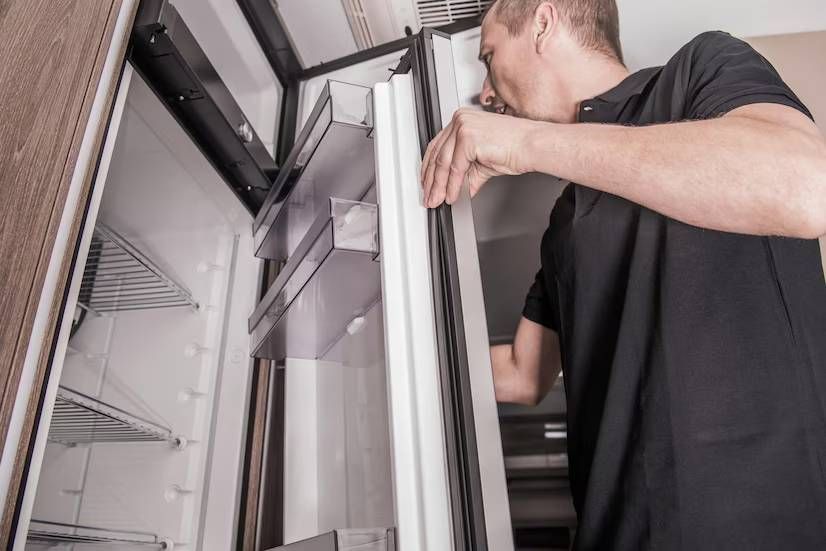
Step 2: Prepare Your Fridge for Removal
Proper preparation is key to ensuring a smooth fridge removal process. Before scheduling a pickup or taking the fridge to a recycling facility, follow these steps:
Empty the Fridge
Start by thoroughly removing all food, beverages, and other items inside your fridge. This will significantly lighten the appliance, making it easier to move. Additionally, clearing the fridge prevents any accidental spills, lingering odors, or contamination during the removal process, ensuring cleanliness.
Defrost the Fridge
If your fridge has a freezer compartment, allow it to defrost several hours before removal. This helps eliminate any excess water or ice buildup that could leak during the move. Use towels or a container to catch melting water and prevent damage to floors.
Unplug and Disconnect
Before moving your fridge, ensure that it is safely unplugged to avoid electrical hazards. If your fridge is equipped with an ice maker or water dispenser, be sure to disconnect any water lines. This step prevents potential leaks and ensures smooth, safe handling during transport.
Remove Shelves and Drawers
Take out all removable shelves, drawers, and trays from your fridge before moving it. Removing these parts reduces the appliance’s weight, making it easier to lift and transport. It also prevents any internal components from shifting, bending, or getting damaged during the removal process.
Step 3: Choose the Right Equipment for Moving
Moving a fridge requires proper equipment to ensure safety and ease of transport. Using the right tools will help prevent injury and damage.
- Use Moving Straps: Moving straps are essential for lifting heavy appliances like fridges. These straps help distribute the weight of the fridge evenly, making it easier to lift and move. Using moving straps also reduces the risk of injury to your back and arms.
- Get a Hand Truck or Dolly: To make transporting your fridge easier, use a hand truck or dolly. These tools allow you to move heavy items with minimal effort, and they ensure the fridge remains upright during the move. Be sure the dolly can handle the size and weight of your fridge.
- Protect Your Floors and Walls: When moving the fridge, protect your floors and walls by using blankets or padding. This will prevent scratches and damage during transport. Additionally, place the fridge on a smooth surface, such as a tile or hardwood floor, to make it easier to move without damaging surfaces.
Step 4: What Happens After Fridge Removal?
Once your fridge is removed, it typically goes through one of two processes: recycling or disposal.
Recycling Process
If you choose to recycle your fridge, it will be transported to a facility designed for appliance recycling. The fridge will be disassembled, and valuable materials like metals, plastics, and glass will be separated and repurposed for new products. Harmful refrigerants and other hazardous materials will also be safely extracted to minimize environmental damage.
Disposal
When recycling isn’t an option, your fridge will be taken to a landfill or designated disposal site. However, responsible waste management companies ensure that even in disposal, the fridge is handled correctly. Appliances are often dismantled, and harmful components are disposed of properly to reduce environmental impact.

Step 5: Assessing Environmental Impact
When removing an old fridge, it’s important to consider the environmental consequences of your actions. Proper disposal and recycling help minimize waste and reduce harmful effects on the planet. Here are five key factors to keep in mind during fridge removal:
- Reduced Landfill Waste: By choosing to recycle your fridge, you help prevent it from ending up in a landfill. Many components, such as metals, plastics, and glass, can be repurposed, reducing the need for new raw materials and cutting down on landfill waste.
- Safe Disposal of Hazardous Materials: Fridges contain refrigerants and other chemicals that can harm the environment if disposed of improperly. Responsible recycling ensures these hazardous substances are safely extracted and treated, preventing contamination of soil and water.
- Energy Savings through Recycling: Recycling refrigerators saves energy. Extracting reusable materials like aluminum and copper from old fridges consumes less energy than producing new ones from scratch, contributing to a lower carbon footprint.
- Preservation of Natural Resources: Many fridge components are made from valuable resources like metals, glass, and plastics. Recycling allows these materials to be reused in manufacturing new products, helping conserve natural resources and reduce the demand for mining and extraction activities.
- Carbon Footprint Reduction: The process of recycling and reusing materials from old fridges is much less carbon-intensive compared to creating new products. By choosing eco-friendly disposal options, you contribute to lowering greenhouse gas emissions and reducing your overall environmental impact.
Step 6: Schedule Regular Appliance Maintenance
Regular maintenance is essential to prolong the life of your fridge, ensuring it operates efficiently and reduces the need for early replacement. By staying on top of maintenance, you can avoid costly repairs and help reduce environmental waste. Here are four key maintenance tips:
Clean the Coils Regularly
Dirty condenser coils can cause your fridge to work harder, leading to higher energy consumption. Clean the coils every 6–12 months using a vacuum or coil brush to improve energy efficiency and prevent potential breakdowns.
Check the Door Seals
Ensure the door seals are intact and free from cracks. Worn or damaged seals let cold air escape, making the fridge work harder to maintain its temperature. Replace seals as needed to keep your fridge running efficiently and reduce energy waste.
Defrost the Freezer Periodically
Frost buildup in the freezer can reduce efficiency and cause your fridge to consume more energy. Regularly defrost the freezer to maintain optimal performance. Most modern fridges have self-defrosting features, but it's still important to check for ice buildup.
Keep the Fridge Level
Make sure your fridge is standing level on the floor. An uneven fridge can cause internal components to wear out prematurely, and it may affect the appliance’s efficiency. Adjust the leveling legs to ensure proper alignment and smoother operation.
Conclusion: Handle Fridge Removal Responsibly
Fridge removal in Rancho Cucamonga doesn’t have to be a daunting task. By following the proper steps and considering your options, you can make the process easier, more efficient, and more environmentally friendly. Whether you choose to donate, recycle, or hire a junk removal service, taking action ensures that your old fridge is removed safely, leaving you with more space and peace of mind.
If you're looking for a hassle-free solution for fridge removal, consider reaching out to Junk Champions Junk Removal. Serving the Rancho Cucamonga area, they offer reliable and responsible services for appliance removal, including free pickups for recyclable or reusable items. For more information or to schedule a removal, you can contact them by phone or text at (909) 453-3398.
Take the next step today toward an eco-friendly, efficient fridge removal process!



